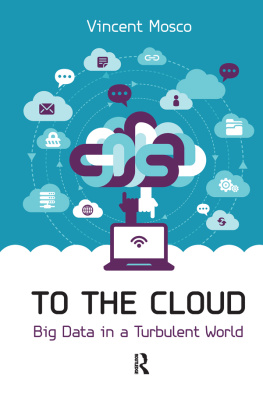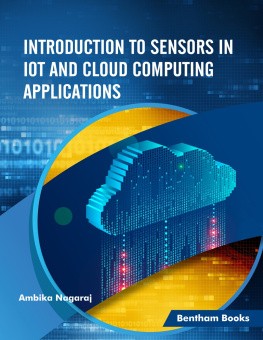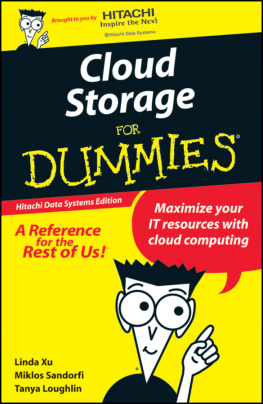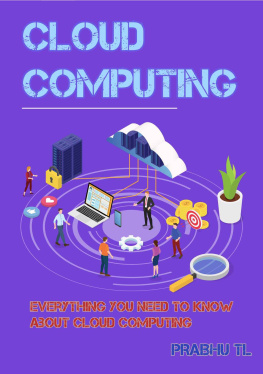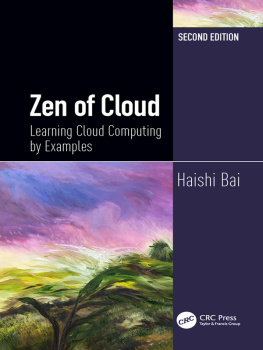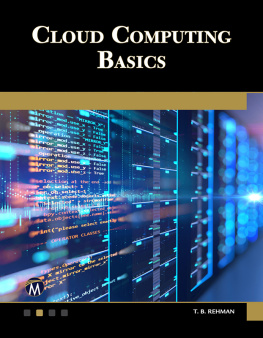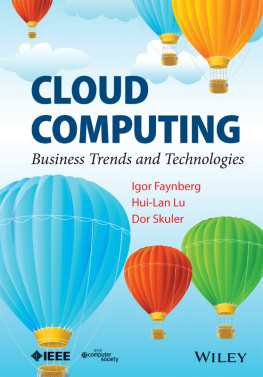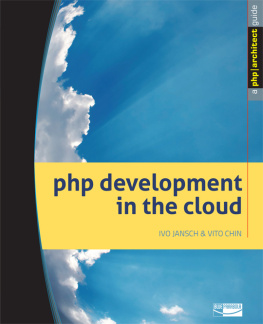TO THE CLOUD
TO THE CLOUD
BIG DATA IN A TURBULENT WORLD

VINCENT MOSCO

First published 2014 by Paradigm Publishers
Published 2016 by Routledge
2 Park Square, Milton Park, Abingdon, Oxon OX14 4RN
711 Third Avenue, New York, NY 10017
Routledge is an imprint of the Taylor & Francis Group, an informa business
Copyright 2014 Vincent Mosco
All rights reserved. No part of this book may be reprinted or reproduced or utilised in any form or by any electronic, mechanical, or other means, now known or hereafter invented, including photocopying and recording, or in any information storage or retrieval system, without permission in writing from the publishers.
Notice:
Product or corporate names may be trademarks or registered trademarks, and are used only for identification and explanation without intent to infringe.
Library of Congress Cataloging-in-Publication Data
Mosco, Vincent.
To the cloud: big data in a turbulent world / Vincent Mosco.
pages cm.
Includes bibliographical references and index.
ISBN 978-1-61205-615-9 (hardcover: alk. paper)
ISBN 978-1-61205-616-6 (pbk.: alk. paper)
ISBN 978-1-315-63155-4 (e-book)
1. Cloud computingSocial aspects. 2. Big dataSocial aspects. 3. Privacy, Right
of. I. Title.
QA76.9.C66M663 2014
004.6782dc 3
2013046088
Designed and Typeset by Straight Creek Bookmakers.
ISBN 13: 978-1-61205-615-9 (hbk)
ISBN 13: 978-1-61205-616-6 (pbk)
With thanks to Louise
CONTENTS

As always, I am grateful for the ideas, criticism, and suggestions of Catherine McKercher, my partner in life and in research. She helped make this a better book in more ways than I can count. Most importantly, Cathys unconditional support and love are a continuing source of inspiration. Dan Schiller has been a dear friend for thirty-five years. We have met all over the world to provide the best help a friend can offer: constructive but candid assessments of each others work. Shortly before starting to write this book, I met up with Dan in Santa Fe, New Mexico, and, after patiently hearing what I had in mind, he advised that I write a chapter on marketing the cloud. I am not sure how he will find the execution of his recommendation in , but I am very grateful for his creative suggestion and for sharing research material that has strengthened the book. Thanks also to Derek Morton for accompanying me on my search for the cloud in New Yorks Metropolitan Museum of Art, where his photography helped me to reflect on Toms Saracenos Cloud City long after we left the exhibition. Derek was also kind to remember me when he came across material useful for the book. When a Microsoft advertisement for cloud computing seemed to vanish from the Internet, Madeline Mosco tracked it down for me. Thank you, Madeline.
I am always especially grateful when former students learn about a new book project and take the time to send me useful reports or just share their views. Thank you, Rick Emrich, Pat Mazepa, Ian Nagy, and Alex Savulescu. Likewise for current students I meet when lecturing on a topic like cloud computing. In this case, special thanks to Adeel Khamisa of Carleton University, as well as Laima Janciute and Emma Agusita, whom I met at the University of Westminster, London.
Lecturing provides a great opportunity to try out ideas and encounter new ones. I am grateful to Daniel Par, who hosted a talk on cloud computing at the University of Ottawa; to Christian Fuchs, who organized my lecture at Londons University of Westminster; and to Aliaa Dakoury, who kindly invited me to deliver a keynote address to the annual conference of the Global Communication Association.
I would also like to thank the Canada Research Chairs Program and Queens University for providing research funding. Finally, I am grateful to the many people who made their mark on my thinking over the past forty years of research and teaching on communication and information technology.
Like water or electricity, cloud computing should now be considered a key utility and therefore should be available to all.
(Groucutt 2013)
The Internet had been around for a while when on July 5, 1993, the New Yorker magazine featured a cartoon that, in the minds of some, marked its real arrival. On the Internet, says the dog at the computer screen to his canine friend, nobody knows youre a dog. I knew it was time to write this book when I woke up one morning, downloaded my digital edition of the October 8, 2012, New Yorker, and came across a new version of a classic cartoon. A little boy looks up at his teacher and, with hope and trepidation, pleads his case: The cloud ate my homework. Okay, perhaps not everyone got the joke, but most readers would have some conception of the cloud as the place where data lives until it is called up on the computer, tablet, or smart phoneor, in the case of a malfunction, the place where data goes to die. This book explains what little Johnny is talking about and why it is important. For better or for worse, the cloud has arrived. The cloud that ate Johnnys homework is a key force in the changing international political economy. The global expansion of networked data centers controlled by a handful of companies continues a process of building a global information economy, once characterized by Bill Gates (1995) as friction-free capitalism. Companies that once housed an information-technology department with its craft tradition can now move most of its work to the cloud, where IT functions and its labor are centralized in an industrial mode of production, processing, storage, and distribution. Furthermore, the cloud takes the next step in a long process of creating a global culture of knowing, captured in the term big data, or what might better be called digital positivism. Here information production accelerates in networks that link data centers, devices, organizations, and individuals appearing to create, in the words of one guru, a global superintelligence (Wolf 2010). The cloud and big data are engines that power informational capitalism even as they enable an increasingly dominant way of knowing. These interlinked processes and the challenges to them comprise the major themes of To the Cloud.
I have been thinking about cloud computing since 2010, when it began to enter public consciousness, particularly after a couple of splashy Super Bowl ads aired during the 2011 game. Then Apple got into the act when it urged users to move their photos, music, mail, and files to its iCloud. Not wanting to give up control over my stash of family photos and worried about the security of my mail, I resisted doing anything more than uploading a few incidentals (although for some reason I did not mind sending my photos into the cloud known as Flickr). Like many people, I was aware that some of my things were finding their way from my computer to remote servers, but this left me feeling a bit uncomfortable. Stories about cloud security breaches, disappearing data, and environmental risks at cloud data centers were making people feel that not all clouds were bright and only a few were green. But the migration of organizational and personal data continued, as did the marketing.

